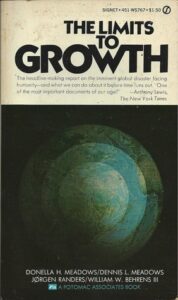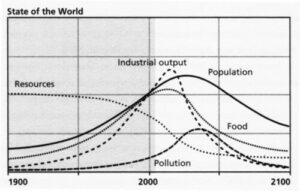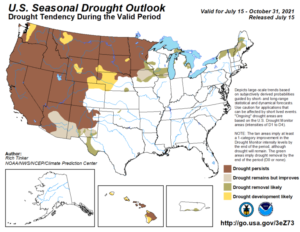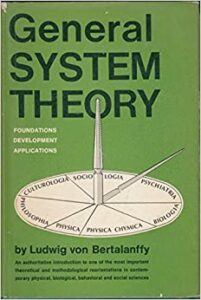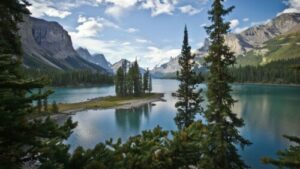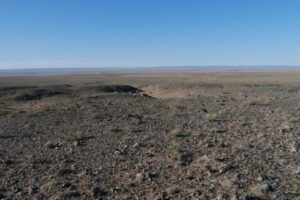The Future Is a Landscape
ENVIRONMENT, 6 Sep 2021
John Michael Greer | Ecosophia - TRANSCEND Media Service
I’ve been reflecting of late about the way that our habitual expectations about change blind us to the way that change actually happens. One of the most important of these is the frankly weird but pervasive notion that the future is a single place, where only one kind of thing happens. It’s always “The Future,” very much in the singular. To most people these days, of course, “The Future” is either progress as usual or it’s instant apocalypse, and I’ve discussed that before, but let’s look at the broader pattern for a moment.
In both of these cases and far too many others as well, the future is all the same, and it’s all the same forever. It’s never one kind of future here and a different kind there, or a glossy Tomorrowland here and something more realistic there, or apocalypse here and everywhere else people just pick themselves up and get on with their lives. Nor is the society of the future generally allowed to peak and decline, as societies do in the real world, nor will the big loud catastrophe fade into memory and leave the survivors to go on to do other things, as disasters do in the real world. Missing here is the crucial realization that history doesn’t stop with us, and change will continue to unfold into the far future the way it has all through the past.
Another conversation along these lines is more than usually timely, because that durable 1972 study The Limits to Growth is back in the news again. There’s good reason for that, of course. The Limits to Growth showed that economic growth on a planetary scale is subject to the law of diminishing returns; pursue growth far enough, and the costs of growth rise faster than the benefits and eventually force growth itself to its knees. Of course it was denounced, derided, and dismissed. Its models of the future have nonetheless proven far more accurate than the conventional wisdom of its time and ours.
You might think that people who looked at the future predictions of The Limits to Growth would notice that the curves generated by the World3 computer model on which the study is based are relatively smooth. Population, industrial product, and other measures rise and fall in great arcs over a timespan of many decades. Yet the weird mental habit mentioned above inevitably swung into action the moment that somebody noticed that the model wasn’t predicting business as usual forever. The corporate media accordingly started screeching at the top of their electronic lungs that we’re all going to die by 2040, full stop, end of sentence.
I’ve noted before that these antics are an absolute necessity to believers in the conventional wisdom just now. More than anything else, those believers need predictions that fail even more obviously than the prophecies of limitless progress hardwired into the acceptable ideologies of our time. Screeching about the imminent end of the world fills the bill very nicely. Sure, Tomorrowland never shows up, and the claims that it’s about to arrive any day now are looking very shopworn. If the only alternative on offer is the end of the world, and that never happens either, it’s a little easier to keep on arguing that the Great Pumpkin-equivalent of the conventional wisdom’s technofetishistic wet dreams really will show up one of these days and hand out flying cars to everyone.
Meanwhile, of course, a very different future is taking shape around us. If we ignore for a moment the Tweedledoom and Tweedledee of the conventional wisdom, it’s possible to get a clear glimpse of the future crouching in the shadow of the present.
The severe drought that has most of western North America in its grip right now is a good place to start. Those of my readers who have been keeping track know already that droughts have been getting increasingly common and increasingly drastic in that half of the continent over the last two decades or so. Of course there have been intervals of more normal conditions in between the heat waves and the droughts, and a great deal of statistical noise, and these have been used repeatedly in attempts to insist that everything’s just fine.
A little while ago, for example, I read an online essay by a meteorologist insisting that the record heat wave that baked the Pacific Northwest last month couldn’t have been caused by shifts in the global climate. The evidence he offered for this claim? Summer high temperatures in the region haven’t been rising in a linear fashion. It’s embarrassing to see this kind of basic ignorance of systems behavior in a credentialed specialist, but it’s not surprising. Once the heyday of systems theory in the middle of the last century waned, most of what was known about the behavior of complex systems seems to have been dropped into our society’s memory hole.
The way complex systems respond to increasing pressure from changing conditions is part of that forgotten knowledge. The change doesn’t unfold in a nice, smooth, simplemindedly linear way. Every complex system tends to settle into an equilibrium condition, held in place by a complex interplay of competing pressures and forces, and the behavior that comes out of this usually takes the form of random wobbles among a set of standard states. That’s why we can talk about the normal climate of a region—under ordinary conditions, the weather mostly cycles through a set of familiar patterns, and any variation from that pattern gets corrected in short order by robust forces pushing things back toward equilibrium.
A system can pop out of one equilibrium condition and into another, but that process takes time and unfolds in a predictable way. First, you get increasing variation without a definite direction of change. The boundaries of “normal” get stretched, and they usually stretch in many directions as the system wobbles back and forth with increasing violence. If the pressure continues, things get more and more chaotic, and then you begin to see the first signs of a new equilibrium: the system flops from its old normal to a new normal, settles there briefly, then flops back again. Rinse and repeat; as the pressure increases, the old normal becomes less and less common, and the new normal stops being the exception and becomes the rule. Periods of the old normal become less and less common and finally stop, and the chaotic behavior fades out as the new equilibrium establishes itself.
That’s what’s happening to the climate in western North American right now. The droughts are the new normal toward which the climate system is moving, and the familiar climates of the recent past are the old normal that’s going away. We even know the shape of the new normal. Paleoclimatologists—people who study the climate of past ages—know perfectly well what happens when global climate is warmer than it has been in the recent past: the West dries out. In the Hypsithermal, the period of higher-than-present global temperatures that followed the end of the last ice age, the West from the coastal mountains to the Mississippi was far drier than it is today—Nebraska was a desert with sand dunes, for example, and quite a bit ofthe land west of the Rockies was uninhabitable wasteland of the sort you find these days in the Sahara Desert.
During that same period most of the region between the Mississippi and the Appalachians was prairie, rather than the broadleaf forest it became after global temperatures cooled. Interestingly, the same rule works in reverse in cold epochs—during the last ice age, for example, Death Valley was a sparkling blue lake surrounded by pine forests—but, er, we’re not moving into a cold epoch. The equilibrium toward which we’re moving is one in which global temperatures are significantly warmer than they have been in the recent past, and the drying out of the West is a sign of the world to come, the climate that will shape the North American future.
The western forest fires that filled so many eastern states with smoky haze several times in recent weeks were a product of that shift. Millions of square miles now covered by conifer forests are turning into desert or semidesert as the climate becomes more arid, and so the forests are going away, with lightning-sparked fires among drought-stressed woodlands as one of Gaia’s preferred methods for making the change from one of her ecosystems to another. When the change is complete—a process that will take many decades and a lot of chaotic wobbles to play out—most of western North America will be desert again, as it was during the Hypsithermal.
It’s worth taking a moment to think about the consequences. In the recent past there was enough rainfall in the great basins west of the Rockies to feed a series of major river systems—the Colorado and Columbia watersheds chief among them—which made agriculture possible across much of the dryland West and also provided drinking water and hydroelectric power in great abundance. As conditions change, most of that water and power are going away. Millions of acres of farmland will have to be abandoned. So will cities that have no other source of drinking water—and there are quite a few of those. Once Lake Mead and Lake Powell become salt flats with a muddy trickle running down the middle, for example, Las Vegas will have rolled snake eyes once too often, and its sun-baked ruins will have to be left to the sand and the keening wind.
Over the century or so ahead of us, as climate belts shift, the Puget Sound region will have to adapt to the sort of climate central California has now, while California settles deeper into desert conditions, without water from the Colorado basin to pick up the slack. If you want today’s Puget Sound climate, plan on moving to the Alaska Panhandle. Further east, the great forests of northwestern Canada will become open prairie. Warm weather systems shifting northward will accelerate the melting of the Arctic Ocean ice pack and speed up the point at which the Arctic will be blue water year round, as it was ten million years ago, when the valley of the Mackenzie River had the kind of climate that the Columbia basin has now.
That’s good news for the people who live beside the Mackenzie, who might want to think about teaching their kids to plant apple orchards and wheatfields to take advantage of the lengthened growing season that’s heading their way. It’s not good news for the hundred million or so Americans who live in areas that are running out of water as the rain belts shift, and who will become impoverished refugees as their homes become valueless and their jobs go away. The economic losses that will follow the collapse of Western agriculture and the abandonment of regions that can no longer support human habitation are almost impossible to tot up. I know, it doesn’t help to realize that the same thing is happening in Asia, where Iran and Kazakhstan are already facing severe water shortages and the drying up of the Himalayas promises to do the same thing to vast regions of China, India, and Pakistan.
Some questions need to be asked and answered at this point. First of all, can anything be done to stop these changes? The answer here is quite simply no. On the one hand, the climate belts are already shifting as the old equilibrum breaks down, and further changes are baked into the cake at this point, given the amount of greenhouse gases that have already hit the atmosphere. On the other, the political will to take significant action to cut greenhouse gas production simply doesn’t exist. The reason it doesn’t exist, in turn, is that most people who claim to be concerned about the climate are eager to see other people deprived of carbon fuels, so long as they themselves don’t have to make any significant changes in their lifestyles.
It’s reached the point that some people on the leftward end of the climate activist movement are loudly insisting that they need to engage in violent terrorism because, as they say, nothing else has worked. They’re right that nothing has worked, because the one thing that would work—leading by example, starting with their own lifestyles—is the one thing they aren’t willing to do.
People on the center and right, meanwhile, have drawn their own conclusions from the antics of the climate chnage movement. Most of them have noticed that the people who claim to be upset about the climate aren’t upset enough to cut their own carbon footprints to any meaningful degree. Many have noticed that nearly all the proposals the left is offering would, as usual, benefit the middle and upper middle classes at the expense of the working classes and the poor. Thus they’re not having any of it, thank you very much. Nor is violent terrorism going to change their minds. It’s just going to convince them that climate activists are dangerous crazies best locked up or used for target practice.
But isn’t the climate crisis all the fault of big corporate polluters? (This is another common talking point on the left these days.) Sure, in a certain sense. Keep in mind, however, that nearly all of what those big corporate polluters are producing with all that carbon are goods and services that support the climate-wrecking lifestyles just mentioned. Since climate activists are still eagerly clamoring for those goods and services, furthermore, there’s no particular reason for the big corporate polluters to do anything else. Yes, boycotts might help, and we’ve already seen that it’s possible to do a worldwide shutdown of commercial air traffic—one of the most climate-damaging industries in existence—without causing undue harm. Will climate activists boycott their annual vacations in Mazatlan and Bali? Let’s just say I’m not holding my breath.
But won’t temperatures just keep on rising and bring on the apocalypse? The evidence from paleoclimatology offers a good way to check the rhetoric. 250 million years ago in the Triassic Period, the atmosphere had six times as much carbon dioxide in it as it has today—a level that will never again be reached, because so much carbon has been locked up in inert geological forms like chalk and limestone since then. The earth was much warmer, ice caps and glaciers were unknown, and the climate accordingly shifted into overdrive: paleoclimatologists have coined the moniker “megamonsoon” for the cataclysmic weather systems that swept over the planet in those days. Nonetheless the ancestors of today’s cedars and sequoias thrived, leaving the traces of vast forests for paleontologists to admire. So did your ancestors, dear reader—for the therapsids, the ancestors of mammals like you and me, the Triassic was a great time.
But what if some kind of long shot catastrophe takes place? Here again, it’s happened. A little later, in the Jurassic and Cretaceous Periods, gargantuan volcanic eruptions in the Toarcian and Cenomanian-Turonian epochs triggered what paleoclimatologists call super-greenhouse events, in which the temperature of the planet spiked to very high levels. The dinosaurs shrugged and went on munching ginkgo leaves. If the dinosaurs had built an industrial civilization, massed huge populations in unsustainable dinocities, and sunk trillions of dinodollars into infrastructure that would become worthless when the temperature rose, they would have had a very hard row to hoe, no question. They didn’t, and so they were still thriving when the earth got whacked by an asteroid millions of years later.
Arguably we aren’t as smart as the dinosaurs. Certainly we’ve got the industrial civilization, the unsustainable cities, and the climate-threatened infrastructure on its way to a final value of zero that they never had, and our species also doesn’t find ginkgo leaves very nourishing. Thus we’ve got a very hard row to hoe. It’s quite understandable that so many people would cling to the fantasy that the world will end sometime very soon so we don’t have to face the consequences of our actions, but you know, the world has no particular interest in catering to our sense of entitlement even when that takes an apocalyptic form.
Yet there’s another point to keep in mind here. The super-greenhouse events in the Toarcian and Cenomanian-Turonian epochs went away once the planet stopped belching gigatons of carbon dioxide into the atmosphere, and the rather more modest greenhouse event of the Holocene-Neocene transition—yes, that’s where we are right now—will go away in due time, too, once our industrial civilization runs out of fossil fuels and drops the same bad habit. How long? Centuries or millennia, depending on complex feedback loops involving such things as plant growth, oceanic currents, and the modest but significant vagaries of the Sun. The desertification of the West is no more permanent than anything else on this planet of ongoing change.
A couple of thousand years from now, in other words, archeologists from one or more of the future nations of eastern North America will travel on muleback through the slowly greening deserts to unearth the fabled ruins of Las Vegas and marvel at the insane bad taste of their ancestors. Then they’ll go back home, publish illustrated books on their adventures, and go on to deal with the problems and possibilities of life in their own time, which will not be anything like the present, nor for that matter anything like our fantasies of the future. (Look at comparable notions of the future published in, say, 1880, if you want some sense of just how far off the mark ours will be.) Then history will go on and other things will happen.
Apply the same logic to every other crisis of our time and see just how different the future looks. Think about the current population bubble as yet another boom that is already showing signs of tipping over into bust—one recent study argues, on plausible grounds, that we may already have hit peak population worldwide. Just as in every great civilization of the past, centuries of steady population decline will help define the shape of the future before us. Think about fossil fuels not as things that about to run out suddenly, nor as things that are about to be replaced by some new and even more abundant energy source, but as things that are already trickling away gradually as rising prices and shrinking production feed each other, leaving us to get by on the much more modest energy resources of sun and wind and muscle.
What I’m suggesting is that we need to think of the future as a landscape: not a single place where only one thing happens and nothing ever changes again, but as a vast and unmapped territory with many different kinds of terrain, where many groups of people live in many different ways, some more successfully than others. Remember, too, that most of the people who live in that landscape will never have heard of us and won’t care about what we thought or said or did. I suspect that that’s the thing that galls our collective sense of entitlement most bitterly and generates the shrill self-pity so common these days—“but we’re special!”
No, not to the landscape of the future, we aren’t. The sooner we let go of our overinflated sense of importance and grasp that we’re just one civilization out of many, going through the familiar arc of rise and fall, the sooner we can get to work on the possibilities that are still within reach.
_______________________________________________
John Michael Greer is a widely read author, blogger, and astrologer whose work focuses on the overlaps between ecology, spirituality, and the future of industrial society. He served twelve years as Grand Archdruid of the Ancient Order of Druids in America, and remains active in that order as well as several other branches of Druid nature spirituality. He currently lives in East Providence, Rhode Island, with his wife Sara.
Go to Original – ecosophia.net
Tags: Ecology, Environment, Future, Growth, Spiritual Science, Spirituality
DISCLAIMER: The statements, views and opinions expressed in pieces republished here are solely those of the authors and do not necessarily represent those of TMS. In accordance with title 17 U.S.C. section 107, this material is distributed without profit to those who have expressed a prior interest in receiving the included information for research and educational purposes. TMS has no affiliation whatsoever with the originator of this article nor is TMS endorsed or sponsored by the originator. “GO TO ORIGINAL” links are provided as a convenience to our readers and allow for verification of authenticity. However, as originating pages are often updated by their originating host sites, the versions posted may not match the versions our readers view when clicking the “GO TO ORIGINAL” links. This site contains copyrighted material the use of which has not always been specifically authorized by the copyright owner. We are making such material available in our efforts to advance understanding of environmental, political, human rights, economic, democracy, scientific, and social justice issues, etc. We believe this constitutes a ‘fair use’ of any such copyrighted material as provided for in section 107 of the US Copyright Law. In accordance with Title 17 U.S.C. Section 107, the material on this site is distributed without profit to those who have expressed a prior interest in receiving the included information for research and educational purposes. For more information go to: http://www.law.cornell.edu/uscode/17/107.shtml. If you wish to use copyrighted material from this site for purposes of your own that go beyond ‘fair use’, you must obtain permission from the copyright owner.
